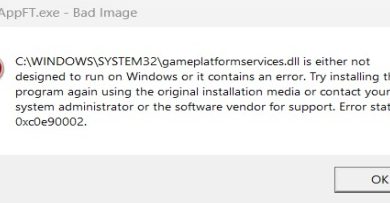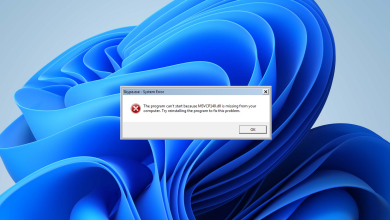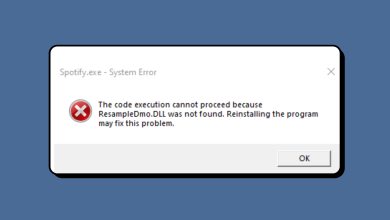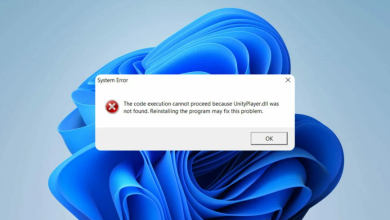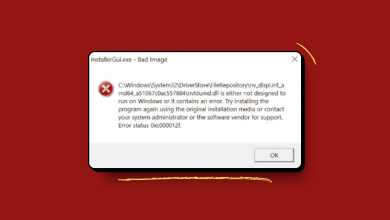Fix: Could not Load File or Assembly ‘RSy3_AudioAppStreamsWrapper.dll
Your system may show the RSy3_AudioAppStreamsWrapper.dll error if the Winsock Catalog of your system is corrupt. Moreover, corrupt Microsoft Visual C++ installation may also cause the error under discussion.
The user encounters the issue when he boots his system (usually, after a Windows update) or after the installation of another application (like Visual Studio). The issue is mainly reported on Razer Synapse.
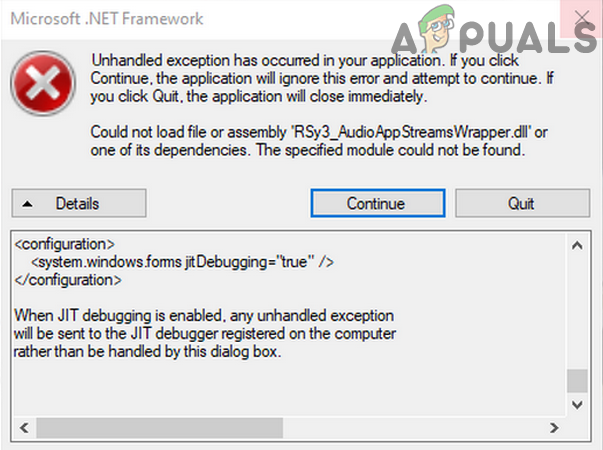
Before proceeding with the troubleshooting process, check if cold restarting your system solves the issue.
Solution 1: Reset Winsock Catalog
Winsock is responsible for input/output requests for Internet applications in the Windows OS and its layering order for all providers is maintained in the Winsock Catalog. You may encounter the error at hand if the Winsock Catalog of your system is corrupt. In this case, resetting the Winsock Catalog through the Command Prompts may solve the problem.
- Hit the Windows logo key of your keyboard to launch the Windows menu and then, in the search bar, type Command Prompt. Then, in the results shown by the search, right-click on Command Prompt and choose Run as Administrator.

Opening an Elevated Command Prompt - Then execute the following:
netsh winsock reset catalog

Reset the Winsock Catalog - Now reboot your PC and upon reboot, check if the DLL error is resolved.
Solution 2: Disable .NET Features in the Control Panel
You may encounter the DLL error under discussion if the application (that you are encountering an issue with) uses a different version of .Net Framework but the OS of your system is serving it with another version. In this context, disabling the built-in dot net framework may solve the problem.
- Hit the Windows logo key and search for Control Panel. Then choose the Control Panel.

Opening Control Panel - Now select Programs and then Turn Windows Features on or off.

Turn Windows Features on or off - Now, expand .Net Framework 3.5 and then uncheck every option there (including itself). But do not forget to keep a note of the enabled .Net Framework options (we will require it at a later stage).
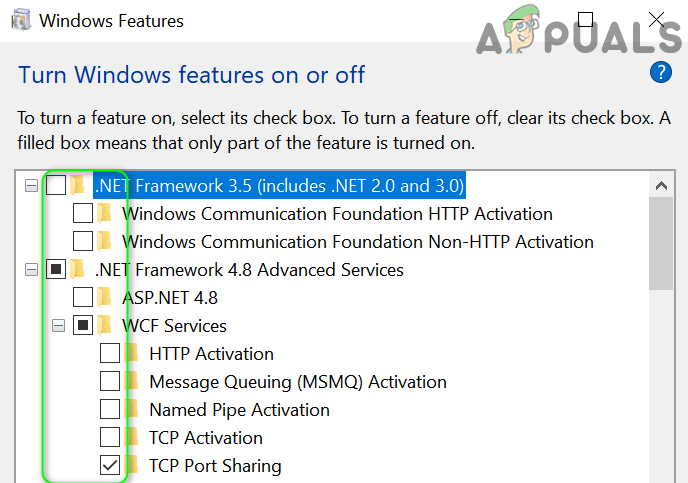
Disable the .Net Framework in the Control Panel - Repeat the same for all the variants of .Net Framework by unchecking the relevant checkbox.
- Now reboot your PC and upon reboot, open a web browser.
- Then download the Visual Studio Express and launch the downloaded file with administrative privileges.

Download Visual Studio Express - During installation, at the Workload tab, choose “.Net Desktop Development” and at the Individual Components tab, enable all the .NET Feature present there.

Select .Net Desktop Development - Now complete the installation of Visual Studio Express and then reboot your PC.
- Upon reboot, check if the system is clear of the DLL error. If so, then repeat steps 1 to 4 to enable the .Net Framework options in the system’s Control Panel (that were disabled) and check if the issue is resolved.
Solution 3: Reinstall the Visual C++ and the Problematic Application
Your system may fail to load the problematic DLL file if the installation of the program using the said file is corrupt. In this case, reinstalling the Visual C++ and the problematic application (Razer Synapse) may solve the problem.
- Exit the Razer Synapse from the system’s tray.
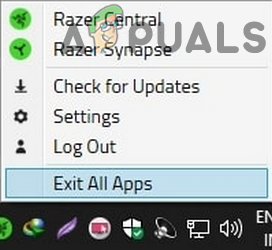
Exit All Apps of Razer Synapse in the System Tray - Hit the Windows key and search for Control Panel. Then choose the Control Panel and open Uninstall a Program.
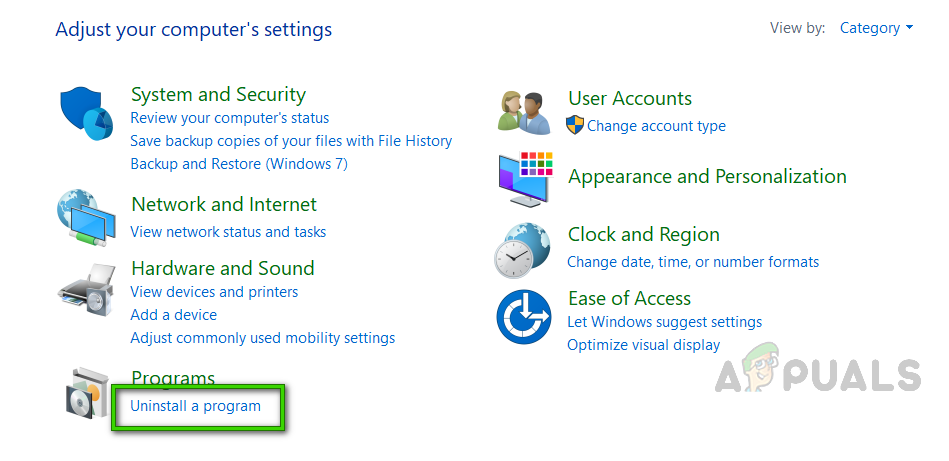
Opening Installed Programs List - Now select the problematic applications (e.g. Razer Synapse) and click on Uninstall.
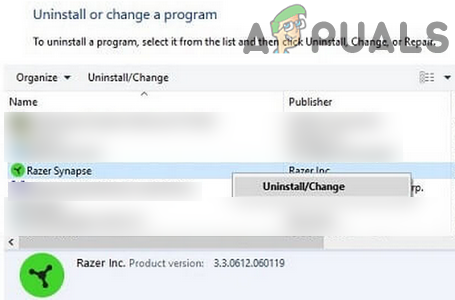
Uninstall Razer Synapse - Then follow the prompts on your screen to uninstall the problematic application.
- Repeat the same process to uninstall any other variant of Razer Synapse.
- Now reboot your PC and upon reboot, right-click on the Windows button and select Run.
- Then execute the following one by one and delete the folders related to Razer Synapse there (Razer, Razer Chroma SDK, Synapse3, etc.):
%PROGRAMFILES(x86)% %PROGRAMFILES% %ProgramData% %AppData%
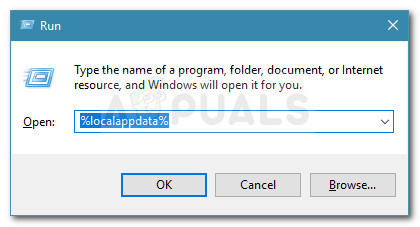
Run dialog box: %localappdata% - Then reboot your PC and upon reboot, reinstall Razer Synapse and check if your system is clear of the DLL error.
- If not, open the Uninstall Program window in Control Panel (step 2).
- Now, right-click on any of the Microsoft Visual C++ installations and then select Change (if the Change option is not shown, then ignore this installation and try on another Microsoft Visual C++ installation).

Change the Microsoft Visual C++ Installation - Now click on the Repair button and then wait for repairing of the Microsoft Visual C++.

Repair the Microsoft Visual C++ Installation - Then repeat the same to repair all the Microsoft Visual C++ installations (ignore those installations that do not offer the repair option).
- After repairing the Microsoft Visual C++ installations, reboot your PC and upon reboot, check if the DLL issue is resolved.
- If not, open the Uninstall Program window in Control Panel (steps 1 to 2).
- Now select any of the Microsoft Visual C++ X86 based installations (ignore X64 installations) and then click on Uninstall (keep a note of the Microsoft Visual C++ installations that are being uninstalled).
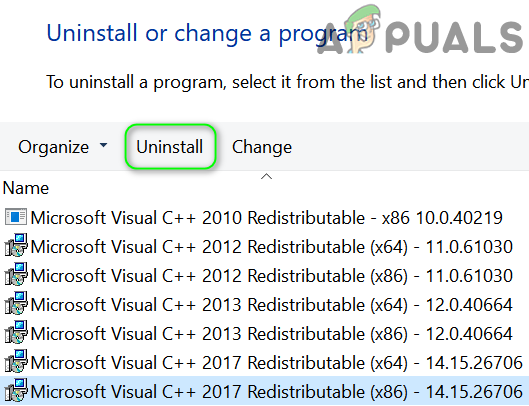
Uninstall Microsoft Visual C++ Installation X86-Based - Then follow the prompts on your screen to complete uninstallation.
- Repeat the same to uninstall all X86-based versions of Microsoft Visual C++.
- Now reboot your system and upon reboot, check if your system is clear of the DLL error.
- If not, reinstall the Microsoft Visual C++ X86 versions that were uninstalled in the previous steps and reboot your PC.
- Upon reboot, check if the issue is resolved. If not, then try to use any of the Visual C++ Runtime Installer (All-In-One), and hopefully, the DLL issue is resolved.

